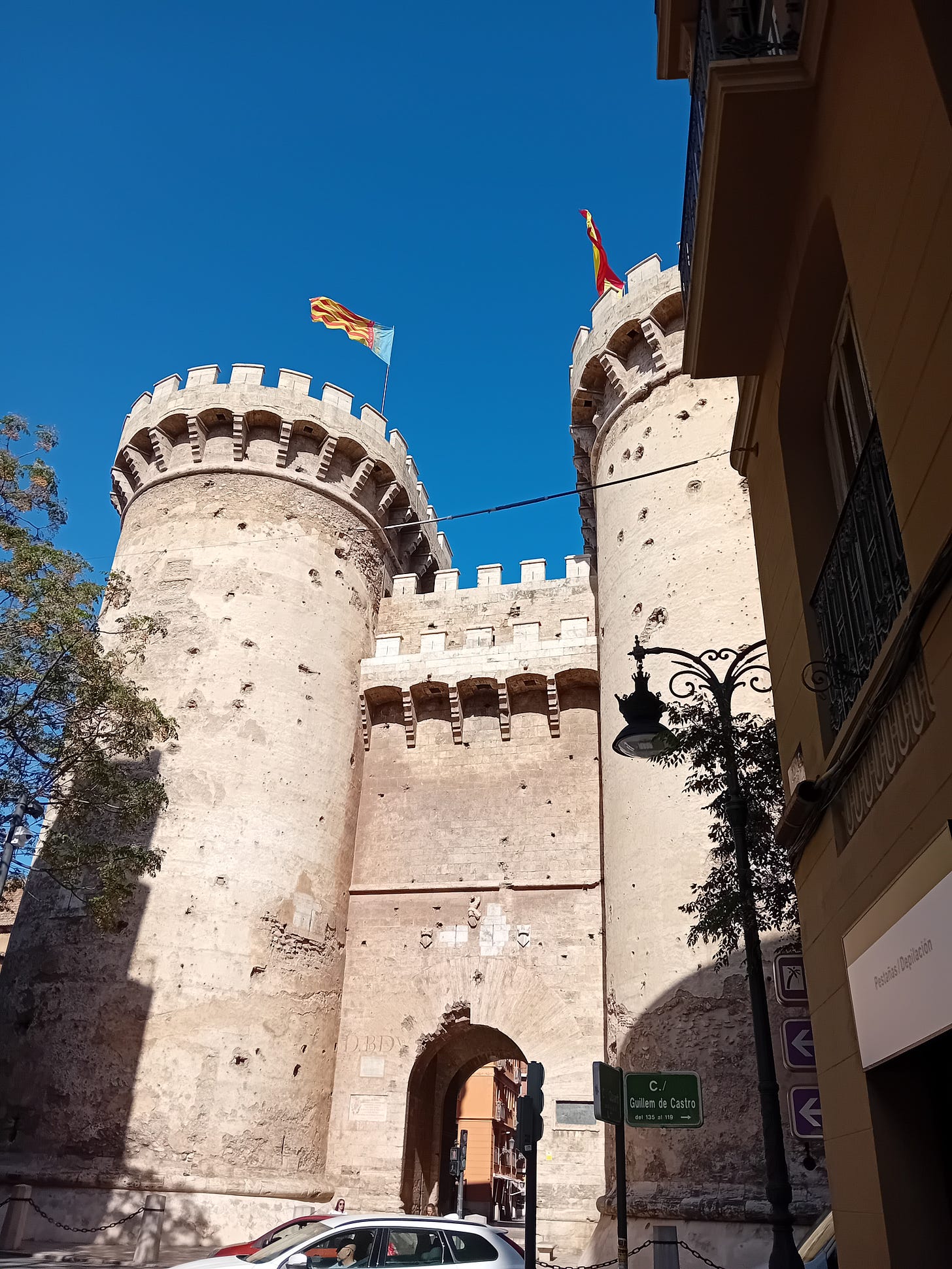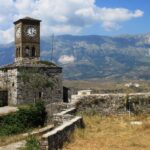
Introduction
Spain ‘s Rich Historical Heritage
Spain is a treasure trove of history, showcasing a diverse array of cultures that have shaped its identity over thousands of years. From prehistoric cave paintings to grand Moorish palaces, each landmark tells a story that has influenced not only Spain but also the broader European narrative.
Why Explore Spain’s Landmarks
Exploring Spain’s historical landmarks allows visitors to experience this rich tapestry firsthand. Notable reasons include:
- Cultural Immersion : Engage with local traditions and understand Spain’s vibrant history.
- Architectural Marvels : Witness an impressive mix of styles like Gothic, Romanesque, and Baroque.
- Personal Connection : Many travelers find connections to their own heritage or personal stories in these historic sites.
Each visit promises a unique blend of learning and inspiration, deepening one’s appreciation for Spain’s profound historical legacy.

Prehistoric Wonders
Altamira Cave Paintings
At the heart of Spain’s prehistoric wonders lie the remarkable Altamira Cave Paintings. Discovered in the late 19th century, these vivid depictions of bison demonstrate the artistic prowess of our ancestors. Walking through the cave, one can’t help but feel a connection to those early artists who infused their world with color and life.
- Artistic Significance : Considered one of the earliest forms of human art.
- UNESCO World Heritage Site : Recognized for its cultural importance.
Dolmen de Menga
Another marvel is the Dolmen de Menga, a monumental burial site that dates back over 5,000 years. The structure, with its massive stones, offers insight into the megalithic traditions of early Spanish societies. Standing in its shadow, one can ponder the rituals and beliefs that shaped a civilization.
- Engineering Feat : Its construction showcases advanced ancient engineering skills.
- Cultural Insight : Provides a glimpse into prehistoric burial practices.
Exploring these prehistoric wonders fosters a deeper appreciation for the ingenuity and creativity of early humans, paving the way for the vibrant cultures that followed.

Roman Relics
Roman Aqueduct of Segovia
Transitioning from prehistoric wonders, the Roman Aqueduct of Segovia stands as a testament to Roman engineering marvel. Completed in the 1st century AD, this 27-kilometer aqueduct transported water from the Frío River to the city.
- Impressive Architecture : Its iconic arches soar over 28 meters high.
- Functional Design : Still remarkably well-preserved, it showcases practical Roman solutions.
Amphitheater of Mérida
Equally impressive is the Amphitheater of Mérida, built in 15 BC. Attending a performance here evokes the thrill of ancient entertainment with its well-preserved stage and seating for thousands.
- Cultural Hub : Once a center for gladiatorial contests and public spectacles.
- UNESCO World Heritage Site : Recognized for its historical and architectural significance.
Exploring these Roman relics enriches one’s understanding of Spain’s historical narrative, highlighting the lasting influence of Roman civilization on the country’s development.

Moorish Marvels
Alhambra Palace
Continuing the journey through Spain’s captivating history, the Alhambra Palace in Granada exquisitely showcases Moorish architecture and art. This palatial fortress, with its intricate tile work and serene gardens, offers visitors a glimpse into the opulence of the Nasrid Dynasty.
- Stunning Details : Intricate stucco work and reflective pools create a dreamy atmosphere.
- Historical Significance : Originally built as a military fortress, it later transformed into a royal palace.
Great Mosque of Córdoba
Equally enchanting is the Great Mosque of Córdoba, a breathtaking masterpiece of Islamic architecture. As you walk beneath the iconic red-and-white arches, the vastness of this mosque invites deep reflection on the rich cultural tapestry of the region.
- Architectural Innovation : Features over 850 columns made of marble and granite.
- Cultural Blend : A powerful symbol of the coexistence of cultures during the Moorish period.
The Moorish marvels of Spain not only showcase stunning architectural artistry but also narrate tales of a time when diverse cultures intertwined, leaving an indelible mark on the country’s heritage.

Medieval Treasures
Santiago de Compostela Cathedral
As we delve into Spain’s medieval treasures, the Santiago de Compostela Cathedral emerges as a beacon of pilgrimage. This magnificent structure, believed to house the remains of Saint James, captivates with its ornate facade and stunning Baroque altar.
- Pilgrimage Site : An integral part of the Camino de Santiago, drawing thousands yearly.
- Architectural Features : Combines Romanesque and Gothic styles, creating a unique visual experience.
Segovia Alcázar
Not far behind in historical significance is the enchanting Segovia Alcázar. With its fairy-tale towers and majestic setting, this castle offers a glimpse into the life of Spanish royalty.
- Historical Importance : Once served as a royal palace, military school, and prison.
- Spectacular Views : Perched atop a hill, it provides breathtaking vistas of the surrounding landscape.
Exploring these medieval treasures reveals the complexities of Spain’s past, illustrating how architecture not only serves functional purposes but also tells the story of a nation’s evolving identity.

Renaissance and Baroque Gems
El Escorial
Transitioning into the Renaissance and Baroque eras, El Escorial stands as a majestic symbol of Spanish power and culture. This monumental complex, commissioned by King Philip II, serves as a palace, monastery, and mausoleum, all wrapped in exquisite architecture.
- Architectural Brilliance : A remarkable blend of Renaissance and Baroque elements.
- Cultural Significance : Houses an extensive library that was once a beacon of knowledge.
Plaza Mayor in Madrid
Another gem from this era is the Plaza Mayor in Madrid, a vibrant hub that captures the spirit of the city. Surrounded by beautiful buildings and bustling cafes, it’s easy to imagine the historical events that unfolded in this iconic square.
- Historical Importance : Once a venue for markets, bullfights, and public events.
- Architectural Harmony : Uniform design showcases the grandeur of the Spanish Baroque style.
Exploring these Renaissance and Baroque gems deepens one’s appreciation for Spain’s artistic evolution and the cultural transformations that have shaped modern-day society.

Modern Monuments
Sagrada Família
Shifting to modern monuments, the Sagrada Família in Barcelona is a breathtaking example of architectural innovation. Designed by Antoni Gaudí, this still-unfinished basilica captivates visitors with its elaborate facades and towering spires, reflecting a unique blend of Gothic and Art Nouveau styles.
- Symbolic Design : Each façade tells a different story from the life of Christ.
- Work in Progress : Construction began in 1882 and is expected to be completed in the coming years.
Guggenheim Museum Bilbao
Another remarkable structure is the Guggenheim Museum in Bilbao, a modern marvel that has transformed the city’s landscape. Designed by Frank Gehry, its flowing forms and titanium exterior create a striking visual that draws art lovers from around the world.
- Cultural Impact : Revitalized the local economy and put Bilbao on the global map.
- Diverse Exhibits : Home to contemporary artworks and installations that challenge artistic boundaries.
Exploring these modern monuments showcases Spain’s ability to blend tradition with innovation, reflecting the country’s ongoing evolution in arts and culture.

Preservation Efforts and Challenges
Conservation Projects
As Spain continues to celebrate its rich historical and architectural legacy, various conservation projects are underway to protect these invaluable sites. For instance, restoration efforts at the Alhambra aim to preserve intricate mosaics and architectural details.
- Importance of Preservation : Ensures future generations can appreciate historical landmarks.
- Collaborative Efforts : Involves local governments, communities, and international organizations.
Balancing Tourism with Heritage Protection
However, balancing tourism with heritage protection poses significant challenges. Popular sites, like the Sagrada Família, attract millions annually, which can lead to wear and tear.
- Visitor Management : Implementing entry limits helps mitigate damage.
- Promoting Responsible Tourism : Encouraging visitors to respect and appreciate cultural heritage.
Successfully navigating these preservation efforts ensures that Spain’s historical treasures continue to inspire and educate, striking a vital balance between access and conservation.

Conclusion
Appreciating Spain’s Historical Legacy
In conclusion, exploring Spain’s historical landmarks provides a profound appreciation for its diverse heritage. Each site, from ancient ruins to modern marvels, tells a story that intertwines cultures and epochs, creating a rich tapestry that defines the Spanish identity.
- Cultural Enlightenment : Engaging with these sites broadens perspectives and cultural understanding.
- Shared Humanity : These landmarks remind us of our collective journey through time.
Reflections on Exploring Historical Landmarks
Reflecting on the journey through Spain’s treasures evokes a sense of connection to the past. Each visit becomes a personal experience, leaving lasting memories.
- Inspiration : The beauty and resilience of these sites can inspire creativity and passion.
- Legacy Preservation : Understanding the importance of conservation reinforces our responsibility to protect these treasures for future exploration.
Embracing Spain’s historical legacy enriches not only personal knowledge but also our appreciation for the shared stories that unite us all.







102473199-150x150.jpg)





